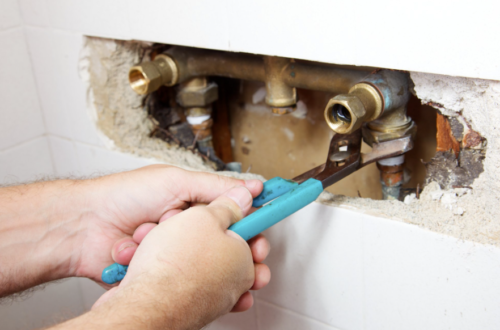The Ultimate Guide to Shower Installation: A Step-by-Step Process
Introduction:
Installing a shower can be an exciting and rewarding project that enhances the functionality and aesthetics of your bathroom. However, it can also be a complex task that requires careful planning and execution. In this comprehensive guide, we will take you through the step-by-step process of shower installation, ensuring that you have all the information you need to successfully complete the project. So, let’s dive in!
Step 1: Planning and Preparation
Before embarking on any home improvement project, proper planning is essential. When it comes to shower installation, start by determining the location and size of the shower enclosure. Consider factors such as available space, plumbing requirements, and overall design aesthetics. It is also crucial to check local building codes and regulations to ensure compliance.
Step 2: Gathering Tools and Materials
To ensure a smooth installation process, gather all the necessary tools and materials beforehand. Some of the commonly required items include a drill, tape measure, level, screwdriver, adjustable wrench, pipe cutter, and plumber’s putty. Additionally, you will need shower fixtures, tiles, grout, waterproofing membrane, and cement board.
Step 3: Removing the Existing Shower (if applicable)
If you are replacing an existing shower, the first step is to remove it. Turn off the water supply to the shower and remove any fixtures or fittings. Carefully detach the shower base or bathtub, ensuring that you take necessary precautions to prevent any damage to the surrounding walls or flooring.
Step 4: Plumbing Preparation
Proper plumbing is crucial for a functional and leak-free shower installation. Begin by ensuring that the water supply lines and drain are correctly positioned for the new shower. Make any necessary adjustments to ensure accurate measurements and proper alignment. It is recommended to consult a professional plumber if you are unfamiliar with plumbing tasks.
Step 5: Installing the Shower Base
The shower base forms the foundation of your shower enclosure and provides a waterproof surface. Follow the manufacturer’s instructions to position and secure the shower base correctly. Ensure that it is level and firmly attached to the subfloor. Apply plumber’s putty or silicone caulk around the drain to create a watertight seal.
Step 6: Framing the Shower Walls
Creating a sturdy and secure framework for the shower walls is essential. Use a combination of wooden studs and cement board to construct the walls. Ensure that the walls are plumb and level at all stages of the framing process. This will provide a solid structure for the shower enclosure.
Step 7: Waterproofing the Shower Walls
To prevent water damage and mold growth, it is vital to waterproof the shower walls. Apply a waterproofing membrane, such as a liquid or sheet membrane, to the cement board. Be sure to follow the manufacturer’s instructions for proper application and curing time. This step is crucial in ensuring a long-lasting and leak-free shower.
Step 8: Tiling the Shower Walls
Tiling the shower walls not only adds a touch of elegance but also provides a durable and easy-to-clean surface. Choose your desired tiles and carefully adhere them to the waterproofed walls using tile adhesive or thinset mortar. Use tile spacers to ensure even spacing between tiles and allow sufficient time for the adhesive to dry.
Step 9: Installing Shower Fixtures
Once the tiles have set, it’s time to install the shower fixtures. This includes the showerhead, faucets, and any other accessories you desire. Follow the manufacturer’s instructions to ensure proper installation. Test the fixtures for leaks and make any necessary adjustments.
Step 10: Grouting and Sealing
After the shower fixtures are in place, it’s time to grout the tile joints. Use a grout float to apply the grout, ensuring that it fills all the gaps evenly. Wipe away excess grout with a damp sponge, being careful not to remove too much. Allow the grout to cure before applying a grout sealer to protect it from stains and moisture.
Step 11: Cleaning and Finishing Touches
Once the grout has fully cured, clean the tiles and remove any grout haze. Polish the tiles to achieve a gleaming finish. Install any additional accessories, such as a shower shelf or towel hooks, to personalize your shower space.
FAQs:
Q1: Can I install a shower myself, or should I hire a professional?
A: While it is possible to install a shower yourself, it is recommended to hire a professional, especially if you have limited experience with plumbing or construction projects. A professional can ensure that the installation is done correctly and in compliance with building codes.
Q2: How long does a shower installation typically take?
A: The duration of a shower installation can vary depending on various factors, such as the complexity of the project and the availability of tools and materials. On average, a shower installation can take anywhere from a few days to a week or more.
Q3: Do I need to waterproof the shower walls?
A: Yes, waterproofing the shower walls is crucial to prevent water damage and mold growth. It ensures that moisture does not seep into the underlying structure, protecting your bathroom from potential issues in the future.
Q4: What type of tiles should I use for my shower walls?
A: It is recommended to use tiles specifically designed for wet areas, such as ceramic or porcelain tiles. These materials are durable, water-resistant, and easy to clean, making them ideal for shower installations.
Q5: How often should I reseal the grout in my shower?
A: The frequency of grout resealing depends on various factors, including the type of grout used and the amount of usage your shower receives. As a general guideline, it is recommended to reseal the grout every 1-2 years to maintain its integrity and prevent discoloration.
Remember, shower installation can be a complex process, so don’t hesitate to seek professional assistance if needed. By following this step-by-step guide and taking the necessary precautions, you can successfully install a shower that not only meets your functional needs but also adds beauty to your bathroom space.
For more information on shower installation, check out this informative resource: [insert external link to a relevant resource].






